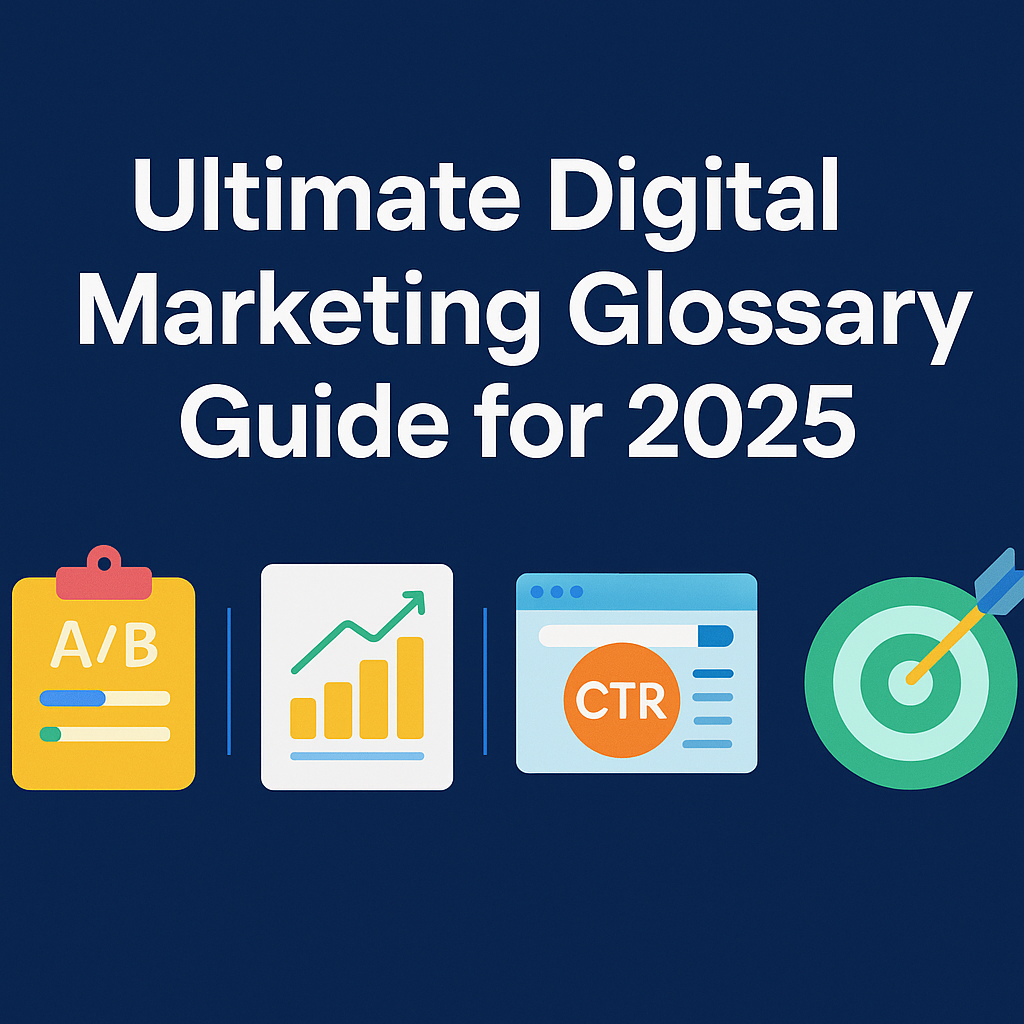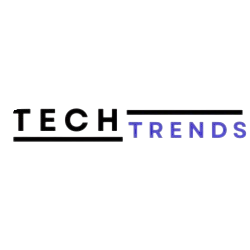What Are Digital Marketing Terms and Why Do They Matter?
You must understand digital marketing jargon to succeed in 2025. Marketers use specific terms to define goals, measure success, and communicate strategy.
You navigate tools like Google Ads, Facebook Ad Manager, and CRM platforms more effectively when you know what each term means. Your reports become clearer. Your strategies improve.
Digital campaigns without clear definitions create confusion. You miss conversions. You waste ad spend. You underperform.
Why You Must Understand Digital Marketing Jargon in 2025
You operate in a fast-changing digital landscape. AI-powered search, voice queries, and evolving algorithm updates have changed the game.
Marketers use terms like Core Web Vitals, Schema Markup, and Performance Max. If you do not understand them, your site won’t rank.
Knowing terms like CPC, CTR, and CPA helps you benchmark your campaigns against competitors.
How Industry Terms Improve Strategy, Reporting, and Collaboration
Teams use shared terminology to collaborate across campaigns. You align content, ads, email flows, and tracking with precision.
Clear definitions fuel better reporting. You track ROAS, customer lifetime value, and attribution across platforms.
Clients trust agencies who speak their language. Teams trust leaders who define their strategy clearly.
Standardizing language across departments increases efficiency. It also improves team morale and fosters accountability.
Digital Marketing Acronyms and Key Metrics Explained
What Does CTR, CPC, CPA, CPL, and CPM Stand For?
- CTR (Click-Through Rate): Shows engagement per impression
- CPC (Cost Per Click): Shows how much each ad click costs
- CPA (Cost Per Acquisition): Measures cost to acquire a customer
- CPL (Cost Per Lead): Tracks cost per potential customer
- CPM (Cost Per Mille): Cost per thousand impressions in display ads
You use CTR to gauge ad relevance. You optimize CPC and CPA to increase ROAS.
Higher CTR often means better ad targeting and copywriting. Lower CPC indicates platform efficiency and strong keyword targeting.
How ROAS, ROI, and CLV Impact Your Ad Spend and Profitability
- ROAS (Return on Ad Spend): Revenue earned per dollar spent
- ROI (Return on Investment): Total profitability after costs
- CLV (Customer Lifetime Value): Value a customer brings over time
You scale your paid campaigns when CLV exceeds CPA. You reallocate budget to high-ROAS channels. You build sustainable growth.
Understanding ROI and CLV allows for smarter forecasting and long-term revenue planning.
A-Z Digital Marketing Glossary (2025 Edition)
A–C: Ad Formats, Analytics, and Attribution
- A/B Testing: Run variants of ads or landing pages to find what performs better
- Account-Based Advertising: Focus on high-value companies with personalized ads
- Ad Audience: Defines who will see your digital ad
- Ad Targeting: Uses data to match ads to your ideal customer
- AI-Powered Search: Includes Google AI Overviews and generative search results
- Attribution: Assigns conversion credit to one or more channels (first-click, last-click, linear, position-based)
D–F: Data, Funnels, and Facebook Tools
- Digital PR: Earn backlinks through media placements
- Display Ads: Visual ads served on websites and apps
- Domain Rating (DR): Link authority score from Ahrefs
- Facebook Ad Manager: Tool for managing and measuring Facebook ad campaigns
- Facebook Audience Insights: Tool to research target demographics and interests
G–K: Google Tools, Generative SEO, and Keyword Strategy
- Google Ads: Main SEM platform for paid search and YouTube ads
- Google Search Console: Measures organic visibility and indexing
- Google Analytics: Tracks user behavior and conversions
- Generative Engine Optimization (GEO): Strategy to rank in AI-powered results
- Keyword Research: Targets transactional, navigational, and informational intent
L–O: Landing Pages, Link Building, and On-Page SEO
- Landing Page: The destination of an ad or CTA link
- Lead Generation: Process of attracting potential customers
- Long-Tail Keywords: Specific, low-volume keywords with high intent
- Link Building: Gains backlinks from high-authority sources
- On-Page Optimization: Aligns titles, H1 tags, and meta descriptions for SEO
P–T: PPC, Programmatic, and Technical SEO
- Performance Max: Google’s automated goal-based campaign type
- Programmatic Advertising: Automated bidding for ad space in real-time
- Core Web Vitals:
- LCP (Largest Contentful Paint): Measures load speed
- FID (First Input Delay): Measures interactivity
- CLS (Cumulative Layout Shift): Measures visual stability
- Canonical Tags: Avoid duplicate content issues
- Tracking Cookies: Monitor visitor behavior for remarketing
U–Z: UX Design, User Data, and YouTube Ads
- User Experience (UX): How users feel using your site
- UI (User Interface): The interface they interact with
- URL Structure: Impacts SEO and user experience
- YouTube Ads: Includes display, bumper, skippable, and non-skippable formats
- User-Generated Content: Builds credibility and community
Most Critical Digital Marketing Tools and Platforms
Which Tools Help Track and Optimize Campaigns?
- Google Analytics: Tracks visits, events, and conversions
- Google Tag Manager: Deploys tracking tags without coding
- CRM Platforms: Manage leads and customer data
- CDPs: Centralize customer data for segmentation and personalization
- DMPs: Collect data for ad targeting
Why Every Marketer Should Use Google Search Console & Tag Manager
You monitor search visibility, fix crawling issues, and track KPIs in one place. You streamline tracking across platforms.
Your campaigns improve because your data becomes actionable.
You gain a comprehensive view of user behavior. You also identify content gaps and technical SEO issues faster.
Technical SEO and Algorithm Essentials for 2025
What Is Google’s Core Algorithm and Why It Updates Often
Google’s algorithm uses over 200 ranking signals. It updates daily to deliver relevant results.
Updates target speed, authority, E-E-A-T, and mobile usability. You need schema markup, HTTPS, and optimized sitemaps to rank.
You must audit your website regularly. Even small technical issues can lower your rankings.
How Core Web Vitals and Schema Markup Affect Rankings
- Core Web Vitals: Speed, interactivity, and stability affect user experience
- Schema Markup: Adds rich snippets like FAQs, reviews, and products
You improve rankings and click-through rates by combining both.
Pages that load faster and show structured data are favored by Google’s AI engines.
HTTPS, Robots.txt, Canonicals, and Sitemap

Your site must be secure and crawlable. You use:
- HTTPS to encrypt data
- Robots.txt to allow/disallow crawlers
- Canonicals to prevent duplicate indexing
- XML Sitemaps to show search engines your structure
All four components work together to improve indexing and search visibility.
How to Build Strategy Using This Glossary
How to Improve Campaign Reporting with Standardized Terms
Teams track performance with unified metrics like CTR, CPA, and ROAS. You benchmark consistently.
You scale channels based on attribution data. You refine copy and landing pages using A/B test insights.
Reporting improves when all team members use the same terms. Dashboards become easier to interpret.
How to Align Marketing Teams Across Channels Using Definitions
You use terms like “Bounce Rate,” “Conversion Funnel,” and “Engagement Rate” across content, ads, and SEO teams.
Standardization builds speed, clarity, and trust.
Everyone knows what metrics matter most. Confusion decreases. Execution quality improves.
Why Consistency in Terminology Boosts Conversion and ROI
When everyone speaks the same language, creative teams write better copy. Dev teams structure pages correctly. Marketing leaders make smarter investment decisions.
Consistency reduces friction. It increases ROI.
Brands that document and use a shared glossary reduce onboarding time for new hires.
FAQs About Digital Marketing Terms
What’s the Difference Between CPA and CPC?
CPC charges per click. CPA charges per actual conversion. CPA gives better profitability signals.
What Is the Best Attribution Model?
Depends on your goal. First-click shows awareness. Last-click measures final conversion. Linear and time-decay balance impact across the funnel.
Which Metrics Matter Most for eCommerce vs SaaS?
- eCommerce: ROAS, CPA, Conversion Rate
- SaaS: CLV, CAC (Customer Acquisition Cost), MRR (Monthly Recurring Revenue)
Final Takeaway: Stay Updated with 2025’s Glossary
You stay competitive by staying current. Terms evolve. Tools shift. Strategies adapt.
You refer to this glossary when you onboard new team members. You train clients with it. You base campaign audits on it.
You elevate performance by speaking the right language.
Why Tech Trends Is the Best Digital Marketing Agency
You get expert strategy, platform mastery, and flawless execution at Tech Trends.
You work with marketers who know every metric, model, and tool. You gain insight through A/B testing, CRO, SEO, SEM, and real-time reporting.
You never guess what “Core Web Vitals” or “Incrementality” means. You leverage them.
Tech Trends aligns your channels, simplifies your data, and grows your revenue.
You lead with clarity. You scale with precision. You win with Tech Trends.
From small startups to global enterprises, businesses trust Tech Trends to elevate their marketing game.




